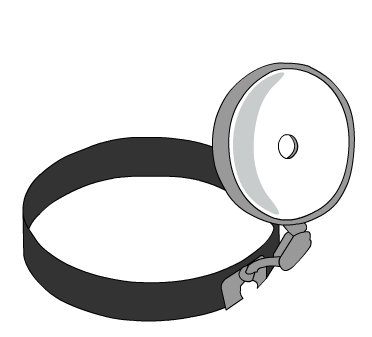1. Name of the location of 90% of epistaxis
2. A genetic disorder that forms AV malformations in the skin, lungs, brain etc
3. Name of posterior vascular plexus in the nasal cavity causing posterior epistaxis
4. 1st line treatment for all epistaxis
5. The common brand name for anterior nasal packing
6. Chemical used in cautery sticks
7. Physically scaring complication of posterior nasal packing with foleys catheter
Coming soon..
Laryngeal Anatomy
This page is about the basics of laryngeal anatomy. For information on hoarseness (abnormal laryngeal function) please go to the dysphonia page.
The larynx is the valve that separates the airway from the pharynx. Its purpose is to protect the airway from fluids and solids that are being swallowed.
A secondary function is in the production of sound (phonation) that can be articulated into speech by the lips, tongue, teeth and palate.

Diagram of the lateral view of the laryngeal cartilages and a coronal view through the larynx.
Anterior

Posterior
Diagram of larynx as seen during examination with an endoscope
The Cartilages
There are six cartilages, three paired and three single. The single cartilages are midline:
-
Epiglottis (elastic cartilage)
-
Thyroid (hyaline)
-
Cricoid (hyaline)
The three paired cartilages are:
-
Arytenoids (hyaline)
-
Cuneiform (elastic cartilage)
-
Corniculate (elastic cartilage)
Of these the arytenoids are the most important as these are responsible for abducting and adducting the vocal cords during breathing, coughing, swallowing and phonation.
The Muscles
The muscles are divided into two groups: intrinsic and extrinsic. The intrinsic muscles are responsible for sound production and lie within the laryngeal framework. They also have a role in airway protection. The extrinsic muscles are involved with elevation and depression of the larynx during swallowing and hence in the protection of the airway.
Important intrinsic muscles:
-
Posterior cricoarytenoid - this is the only abductor muscle (arguably the most important muscle in the body as it allows you to breathe).
-
Cricothyroid - lengthens and tenses the vocal folds and thus adjusts pitch of sound
-
Lateral cricoarytenoid - adductor of the cords
-
Transverse and oblique arytenoids
-
Thyroarytenoid - relaxes and shortens the vocal cord, narrows the glottis
Extrinsic muscles:
There is a long list of these. Elevators include: Digastric, stylohyoid, geniohyoid, and hyoglossus. Depressors include: Sternothyroid, omohyoid, and sternohyoid.
The Nerves
Motor and sensory nerves to the larynx are derived from the Vagus (CN X). This parent nerve gives off two branches: the superior laryngeal and the recurrent laryngeal.
Superior laryngeal nerve - this is predominantly sensory supplying the cords and vestibule (i.e. the cords and upwards). Its muscular branch supplies the cricothyroid muscle).
Recurrent laryngeal nerve - This supplies all of the other intrinsic muscles and is sensory to the subglottis.

